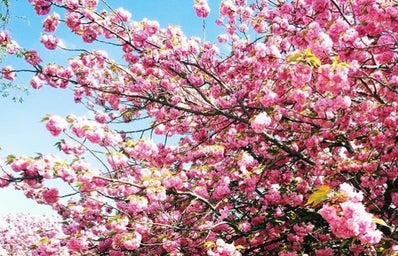That time of the year is here when Shillong, an alluring hill station in North-East India’s abode of nature, Meghalaya, witnesses itself being caressed in the soothing pink hues of cherry blossom or sakura. The Japanese term refers to cherry blossom, which also happens to be the national flower of the country. Sakura buds start appearing in late October, marking the beginning of the season, with full blooms in early November. In Japan, the cherry blossom usually marks the arrival of spring and typically occurs in late March or early April. At this point, you might wonder how these picturesque trees made their way to Meghalaya.
Here’s the story!
The cherry blossoms that we see today throughout the East and West Khasi hills were planted between the 1950s and mid-1970s under the official instructions of Meghalaya’s then Chief Secretary, Mr. Nari K. Rustomji, who sowed sakura seeds brought all the way from Japan in the forested area around his residence. He later ordered the then-District Forest Officer, Mr. Wahlang, to sow the saplings at the banks of Umkhrah near Polo Grounds, Ward’s Lake, and Lady Hydari Park. The Forest Department later carried forward the planting around the city.
During this season, the city of Shillong looks no less than a fairytale, with petals laden with pink and purple hues standing against the clear, bright sky, presenting a sight to behold. To mark the arrival of sakura, which spans for just a few weeks, the state government of Meghalaya organizes the annual ‘Cherry Blossom Festival.’ It also introduced the Shillong Literature Festival last year. The former marks a huge footfall with a great lineup of cultural shows, competitions, cosplay showcases, etc. Last year, the event witnessed the performance of the K-pop group ‘PIXY.’ This year, the world-renowned Canadian pop band Magic, the creators of the hit ‘Rude,’ were to mark their presence at the Festival. However, the event saw an unfortunate cancellation due to a border skirmish between Assam and Meghalaya a few days before the festival. This was done to avoid further escalation during the course of the festival.
Nonetheless, the region, regarded as the Scotland of the East, stands testimony to the breathtakingly beautiful natural gift that India preserves. In a letter dated December 10, 1975, the then Conservator of Forests, B.N. Das, suggested to N.K. Rustomji that they should plant varieties of plants across the city which blossom both in February and November, and he was inclined towards cherry blossom because it’s sturdy and grows quickly under the climatic conditions of the hill station. History tells us that what we have today is the outcome of a conscious effort to do a massive plantation drive across the station. Maybe not for environmental concerns, but the steps are showing results in the present times, both in terms of picturesque purposes and environmental purposes. Hence, the question remains: what are we planting today for a better tomorrow, given that we are witnessing the degradation of the latter?


